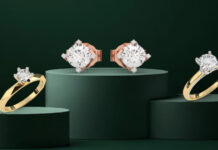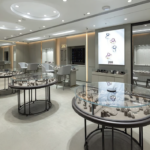Gen Z and millennials present wide-ranging opportunities for the diamond industry, but their buying habits are unlike the generations before them.
According to De Beers’ Diamond Insight Report, which was released this morning, the millennial and gen z generations combined accounted for two-thirds of global diamond jewellery sales in 2017, with the future of this sector dependent on the jewellery industry aligning with the demands of consumers in these age groups.
The report highlights key similarities and differences between millennials and gen z as a result of their life experiences that have particular implications for diamond brands and retailers. For example, millennials are in general more mistrusting, requiring brands to earn their trust before they can pursue growth, while genz tend to be more individualistic and optimistic, desiring products that help build their own personal brands. There are also a number of important similarities between the generations, especially with regards to valuing love, being digital natives, being engaged with social issues and desiring authenticity and self-expression.
Considering these similarities and differences, the 2018 Diamond Insight Report highlights three key areas of opportunity that the two younger generations present for the diamond industry:
Meeting millennial and generation z needs for love and commitment on their own terms
Romantic love remains the key driver globally for diamond jewellery sales, with both millennials and gen z holding strong aspirations to be in committed relationships. However, their attitudes towards how they express and symbolise their love are evolving. When it comes to love and marriage, although many millennials and gen z still want to follow tradition, there is an increasing focus on personalised products and relaxed experiences that reflect their individual values and preferences. The bridal market continues to be of central importance, representing around 27% of diamond jewellery demand in the main diamond consuming countries, but diamonds given simply as a gift of love or romance (unrelated to marriage) are also a significant share of demand from younger consumers, representing a further 12% of total demand in 2017. Diamond brands and retailers must therefore complement traditional designs with more niche, customisable offerings to reflect the broader interpretation of love and commitment from young consumers.
2. Tailoring communications, messages and media to the natural behaviour and preferences of millennials and gen z
As digital communication natives, millennials and gen z have an ‘always on’ attitude that means they live by a motto of ‘I Want What I Want When I Want It’. Online shopping and social media are as significant to these generations as physical retail outlets when it comes to researching purchases. The majority (60%) of US millennial and gen z women aged 18 to 39 search the internet prior to purchasing a diamond to learn about designs, quality, pricing and brands, with the younger millennials and gen z being more likely than older millennials to look on social media for inspiration prior to purchase. In China, nearly all (98%) gen z and millennial consumers aged 19 to 29 research their purchase through one or more channels before buying. As millennials and gen z experience this seamless ‘phygital’ coexistence in their everyday lives, they expect an equally seamless omnichannel experience when buying products. Omnichannel strategies that are organic, authentic, humorous and use out-of-the-box thinking resonate most with these consumers. However, retailers need to understand the different channels they favour. Gen z’s most popular social media platforms are Instagram and Snapchat, while Facebook, Twitter and Pinterest are considered older generations’ media and of relatively less interest to gen z.
3. Aligning company and brand purposes and social commitments to millennial and gen z priorities
Millennials and gen z both display strong concern for social causes and responsibly sourced products. This highlights the opportunity for diamond brands and retailers to be more proactive in communicating the good that diamonds do throughout the world, and the contribution their individual brands make to important social causes. Gen z find corporate ‘storytelling’ insufficient to meet their expectations and expect brands to be able to back up their ethical claims, moving from ‘tell me’ to ‘show me’ when it comes to ethical sourcing, making technologies such as blockchain that can provide digital asset tracking more important.
News Source : professionaljeweller.com
Disclaimer: This information has been collected through secondary research and TJM Media Pvt Ltd. is not responsible for any errors in the same.


























